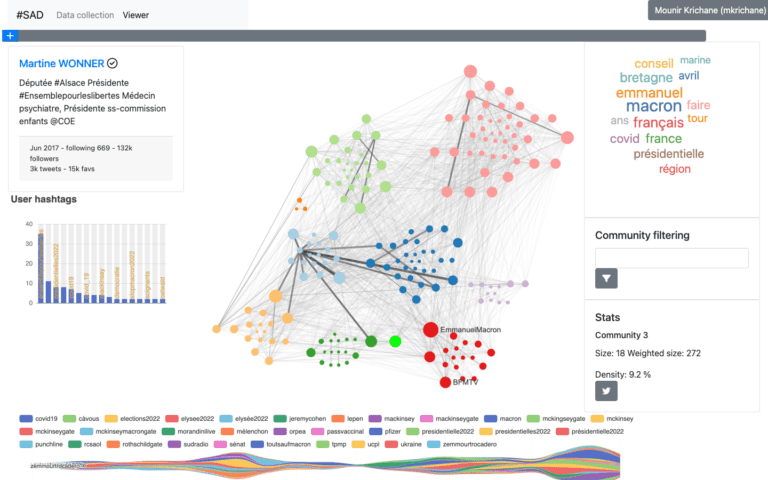The goal of this multidisciplinary project is to better understand the activity of social networks, both from a research and journalistic perspective. This is generally a difficult task, as an enormous amount of data has to be processed and a significant amount of network activity is hidden from the public, due to restrictive terms of use and privacy concerns. As its name suggests, this project is a continuation of the “Social network Architectures of Disinformation (#sad)” project. It aims to build on the results of the first project in order to reach a new level in the analysis of controversies and the dissemination of information within social networks.
With the possibility recently granted by Facebook (via the CrowdTangle platform) to partially access its social platforms, the exploration tool can now be extended to more social networks, such as Facebook and Instagram. The ability to include these platforms is of great interest to both researchers and journalists, and will be a central focus of this second project. Another important aim of this project is to improve the exploration tool to make it more user-friendly and intuitive, so that it can be used by journalists on a daily basis. It would thereby help them to explore social networks quickly and efficiently, allowing them to cut down on time spent on online investigations. Finally, this tool will also be used to train young journalists and students to become more familiar with data journalism.
Project presentation at the IMI Annual Event (10.02.2022)
Watch on YouTube



